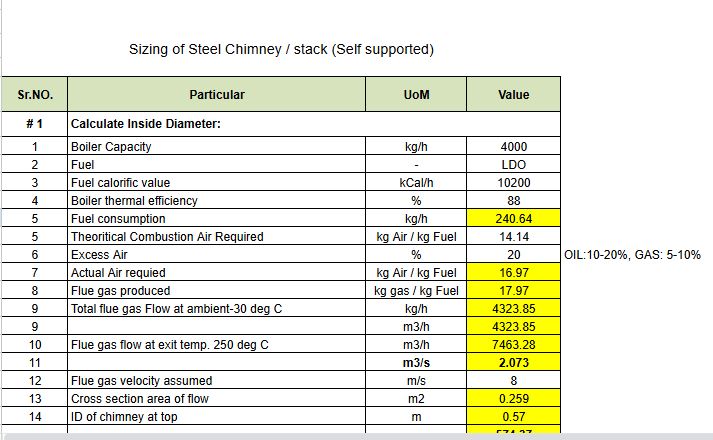
SIZING OF STEEL CHIMNEY / STACK SELF SUPPORTED
Design and Sizing Criteria for Self-Supported Steel Chimneys/Stacks
$39.00$19.00
When sizing a self-supported steel chimney or stack, several critical factors must be considered to ensure optimal performance and structural integrity. The chimney's height should be determined based on the building's height, emissions dispersal requirements, and local regulations. The diameter must accommodate the volume of flue gases generated by the system while minimizing pressure loss. Material selection is also vital; steel offers durability and strength, but must be adequately protected against corrosion, especially in harsh environments. Additionally, structural analysis is required to withstand wind loads and seismic activity, ensuring the chimney remains stable and safe. Proper insulation and expansion joint placement are essential to manage temperature fluctuations and prevent structural damage. Overall, meticulous planning and engineering ensure that self-supported steel chimneys function efficiently while adhering to safety standards.
The design and sizing of a self-supported steel chimney or stack are critical to ensuring structural stability, efficient exhaust dispersion, and compliance with environmental regulations. The sizing process involves determining the appropriate height, diameter, and wall thickness based on factors such as gas flow rate, temperature, wind load, seismic forces, and material properties. Additionally, considerations like stack velocity, draft calculations, and foundation design play a crucial role in maintaining performance and safety. This guide provides a step-by-step approach to steel chimney sizing, covering essential design parameters, formulas, and industry standards for optimal performance and durability.